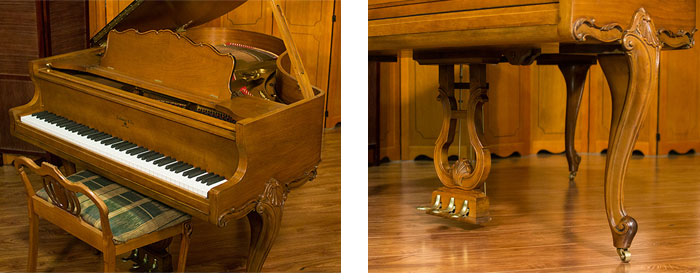Recently I received this question from a viewer:
“If baby grand and upright pianos have shorter strings than grand pianos, and the pitch of a string is determined by its length, how can the smaller pianos play the same set of low notes as grand pianos?”
This is a very good question and one that deals with the physics and scaling of pianos. Longer strings make lower sounds, so how can you replicate the same pitch on pianos with shorter and longer strings?
This is where the scaling of pianos comes into play. The scaling of a piano has several factors which affect pitch. It is the combination of the length of the string, the thickness of the string, and the tension it is under that will determine its pitch. Scaling is something that is determined when the piano is designed and built and it is as much art as science. When replacing strings on a piano you must make sure the thickness and gauge of the strings is the same as the original ones or you could end up breaking strings! Even the steel strings vary in gauge across the piano.
Although even a small piano can create the lowest pitches, they are not pure tones. You might notice that when you play smaller pianos, the lowest notes sound muddled. The fundamental pitch is quite weak and the overtones are extremely audible. The overtones are present in all pitched sounds which create the color of the sound. In very small pianos, the overtones of the lowest notes are extremely pronounced obscuring the fundamental tone.
When I was a young boy I tried an experiment by taking my tape recorder and recording the lowest note on my father’s piano. I played the tape back on my father’s tape recorded which allowed me to hear it played back 4 times faster which also raised the pitch several octaves. The results shocked me. It sounded more like a chord rather than a single note! This is due to the overtones which are so predominant in the sound of the lowest notes of a piano. The smaller the piano, the greater the overtones and the less fundamental pitch comes through on the lowest notes. Larger grand pianos have stronger fundamental pitches on the lowest notes for a richer, cleaner sound but they still contain overtones as almost all pitched sounds do.
Let’s say you have access to a baby grand and a concert grand in the same room. If you played the same low notes on both instruments you would instantly be able to tell the difference in tone between the two because of the different balance of fundamental tones and overtones between to the two.
Thanks again for joining us here at Living Pianos. If you have any questions about this topic or any others, please contact us at: Info@LivingPianos.com (949) 244-372















